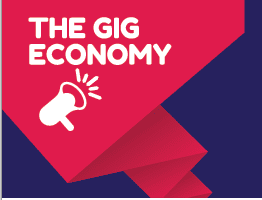Today’s leading organizations are relying on data intelligence to drive business decisions. As the contingent labor workforce continues to grow -now reported as being around 50 percent of all workers -HR and procurement leaders understand the true value that data can reveal when it comes to managing temporary staff. In fact, according to research firm Ardent Partners’ 2016-2017 State of Contingent Workforce Management Report, 53 percent of best-in-class organizations convert contingent labor data into usable intelligence.”Accurate reporting and analytics related to cost, compliance, and quality are essential to contingent workforce program success,” says Janice Weiner, global vice president of MSP for Staff Management | SMX.
The data behind cost, compliance, and quality can show the successes -and challenges -of an organization’s program. And as this piece of the talent puzzle continues to grow, getting it right is becoming more critical than ever. “Implementing a comprehensive reporting solution that addresses both tactical and strategic requirements is critical to gain full visibility into contingent labor program activity,” says Jill E. Parrino, vice president of solutions and innovation for Geometric Results, Inc. “The solution should be comprised of meaningful data and insights that span the variety of stakeholders engaged in managing this important labor channel.”
When it comes to contingent labor, stakeholders tend to cross the organizational spectrum from HR and procurement, to finance, IT, compliance, and legal. The metrics that matter to HR will differ greatly from those that impact finance, IT etc. “HR tends to be more interested in metrics that relate to program performance and workforce planning while procurement tends to be more interested in metrics related to spend and savings,” explains Weiner. “That said, in the most successful programs, these interests intersect. For instance, HR may be interested in the cause of turnover and the impact on workforce planning while procurement may be interested in the cost of turnover. By monitoring all aspects of this metric, both HR and procurement can have the opportunity to control turnover and the associated cost.
” Gaining visibility into spend can also provide key insight into supplier relationships. “The key to optimal spend management is pulling as many suppliers and non-employee labor channels into view as possible,” says Parrino. “This should not be limited to only traditional staffing suppliers. It should also include payrolling vendors, independent contractors/freelancers, project-based/SOW workers, and any other applicable engagement paths. Gaining visibility into all sources will enable decision-making around processes to source workers through the optimal channel. Decisions can be made around the ideal number of suppliers to best leverage overall spend, sunsetting of underperforming suppliers, need to control costs more aggressively for certain job titles or locations.”
In addition to the connection of spend and suppliers, analyzing costs can provide insight into quality of work. “Tracking price alone loses sight of the bigger and more important picture, which is the cost of labor decisions,” finds Steele. “In addition to spend, organizations should be tracking the costs associated with training, lost productivity, and the cost to the business of not filling a vacant position for a prescribed period of time. Traditionally, organizations monitor spending trends by job description, job category, and geography. Today it is possible and advisable to monitor the trends for factors, which can predict spend and costs such as local unemployment rates, demographics, freelancing and sharing economy micro-tasks.”
Ardent Partners’ report shows that best-in-class organizations that leverage analytics are getting insights that drive program management: 68 percent have real-time visibility into spend and suppliers and 65 percent can forecast future needs.
“Increased visibility through advanced analytics enables employees to make better business decisions which will facilitate achieving business objectives and solving business problems,” says Steele.
Challenges Conquered
Organizations that leverage data can get ahead of the game when it comes to contingent labor management. Gordon Steele, vice president of managed services for Bartech Group, explains that workforce planning traditionally uses reporting to answer questions including:
• What skills do I have?
• What skills do I need?
• What gaps will I face?
• How will I fill those gaps in the most cost-effectively?
But, he says, today’s organizations can leverage advanced algorithms to obtain even greater insight into each of the challenges. For example, to help understand the gaps organizations will face, analytics can proactively anticipate premature employee turnover and develop preventative measures.
For filling gaps, today’s technology and advanced algorithms can keep costs low by providing the right mix of labor from multiple sources: full-time equivalents (FTEs), contract labor and labor embedded in Statements of Work (SOW).
It’s Not Just About Spend
In addition to spend and supplier management, there are several types of analytics and metrics that can help manage contract workers:
• Compliance and risk mitigation
• Headcount
• Assignment tenure
• Full-time equivalents
• Time to fill
• Requisition activity
• Worker quality
• Talent and budget forecasting














